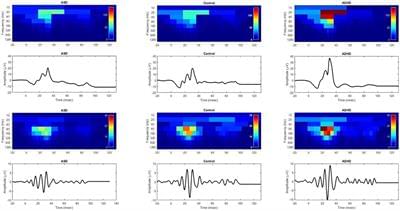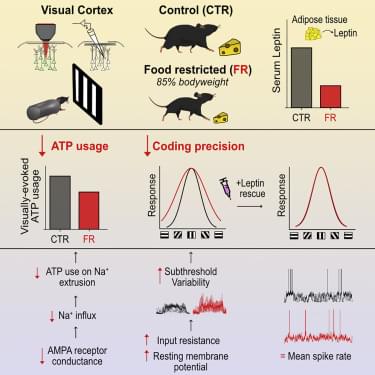As they probe the secrets of the cosmos, scientists question whether our reality is but one in a multiverse.
Page 3827
Jun 23, 2022
Researchers claim China’s new ‘brain-scale’ AI rivals the human brain
Posted by Jose Ruben Rodriguez Fuentes in categories: robotics/AI, supercomputing
Scientists in China say they have been able to run an artificial intelligence model as sophisticated as a human brain on their most powerful supercomputer, a report from the South China Morning Pos t reveals.
According to the report, this puts China’s Newest Generation Sunway supercomputer on the same level as the U.S. Department of Energy’s Frontier, which was named the world’s most powerful supercomputer earlier this month.
As a point of reference, Frontier is the first machine to have demonstrated it can perform more than one quintillion calculations per second.
Jun 23, 2022
Github’s AI-Powered Copilot Can Make Developers’ Job Way Easier
Posted by Jose Ruben Rodriguez Fuentes in categories: information science, robotics/AI
Microsoft-owned GitHub is launching its Copilot AI tool today, which helps suggest lines of code to developers inside their code editor. GitHub originally teamed up with OpenAI last year to launch a preview of Copilot, and it’s generally available to all developers today. Priced at US$10 per month or US$100 a year, GitHub Copilot is capable of suggesting the next line of code as developers type in an integrated development environment (IDE) like Visual Studio Code, Neovim, and JetBrains IDEs. Copilot can suggest complete methods and complex algorithms alongside boilerplate code and assistance with unit testing. More than 1.2 million developers signed up to use the GitHub Copilot preview over the past 12 months, and it will remain a free tool for verified students and maintainers of popular open-source projects. In files where it’s enabled, GitHub says nearly 40 percent of code is now being written by Copilot.
“Over the past year, we’ve continued to iterate and test workflows to help drive the ‘magic’ of Copilot,” Ryan J. Salva, VP of product at GitHub, told TechCrunch via email. “We not only used the preview to learn how people use GitHub Copilot but also to scale the service safely.”
“We specifically designed GitHub Copilot as an editor extension to make sure nothing gets in the way of what you’re doing,” GitHub CEO Thomas Dohmke says in a blog post(Opens in a new window). “GitHub Copilot distills the collective knowledge of the world’s developers into an editor extension that suggests code in real-time, to help you stay focused on what matters most: building great software.”
Jun 23, 2022
New Photonic Materials Could Enable Ultra-Fast Light-Based Computing
Posted by Dan Breeden in categories: computing, materials
Researchers at the University of Central Florida are developing new photonic materials which may one day be used to enable ultra-fast, low-power light-based computing. The unique materials referred to as topological insulators, resemble wires that have been flipped inside out, with the insulation on the inside and the current flowing along the exterior.
In order to avoid the overheating issue that today’s ever-smaller circuits encounter, topological insulators could be incorporated into circuit designs to enable the packing of more processing power into a given area without generating heat.
The researchers’ most recent study, which was published on April 28 in the journal Nature Materials, presented a brand-new process for creating the materials that make use of a unique, chained honeycomb lattice structure. The linked, honeycombed pattern was laser etched onto a piece of silica, a material often used to create photonic circuits, by the researchers.
Jun 23, 2022
The dream of transhumanism: Are we merely human — or are we something more?
Posted by Dan Breeden in category: transhumanism
Humans are already so integrated with technology that the dream of transhumanism is a reality. Can we handle what comes next?
Jun 23, 2022
There are more galaxies in the Universe than even Carl Sagan ever imagined
Posted by Dan Breeden in categories: education, space
The Universe is a vast place, filled with more galaxies than we’ve ever been able to count, even in just the portion we’ve been able to observe. Some 40 years ago, Carl Sagan taught the world that there were hundreds of billions of stars in the Milky Way alone, and perhaps as many as 100 billion galaxies within the observable Universe. Although he never said it in his famous television series, Cosmos, the phrase “billions and billions” has become synonymous with his name, and also with the number of stars we think of as being inherent to each galaxy, as well as the number of galaxies contained within the visible Universe.
But when it comes to the number of galaxies that are actually out there, we’ve learned a number of important facts that have led us to revise that number upwards, and not just by a little bit. Our most detailed observations of the distant Universe, from the Hubble eXtreme Deep Field, gave us an estimate of 170 billion galaxies. A theoretical calculation from a few years ago — the first to account for galaxies too small, faint, and distant to be seen — put the estimate far higher: at 2 trillion. But even that estimate is too low. There ought to be at least 6 trillion, and perhaps more like 20 trillion, galaxies, if we’re ever able to count them all. Here’s how we got there.
Jun 23, 2022
Interstellar Travel Could Be Possible Even Without Spaceships, Scientist Says
Posted by Dan Breeden in categories: existential risks, space travel
In about 5 billion years, the Sun will leave the main sequence and become a red giant. It’ll expand and transform into a glowering, malevolent ball and consume and destroy Mercury, Venus, Earth, and probably Mars.
Can humanity survive the Sun’s red giant phase? Extraterrestrial Civilizations (ETCs) may have already faced this existential threat.
Could they have survived it by migrating to another star system without the use of spaceships?
Jun 23, 2022
Beyond longevity: The DIY quest to cheat death and stop aging
Posted by Kelvin Dafiaghor in categories: biotech/medical, life extension, neuroscience
At 79, he’s already outlived the CDC’s official life expectancy by two years and he has no intention of dying — or even slowing down — anytime soon. An active man, Scott jets between his homes in upstate New York and Florida, flies to exotic locations such as Panama City for business and still finds time for the odd cruise. His secret? A DIY regime of self-experimentation and untested therapies he believes will keep him going well past the next century.
Self-experimenters litter the history of medical science. Dentist Horace Wells dosed himself with nitrous oxide in 1,844 to see if it could kill pain, Nicholas Senn inflated his innards with hydrogen a few decades later to work out if it could diagnose a ruptured bowel, and more recently, Barry Marshall drank a solution containing H. pylori in 1985 to prove the bacterium caused ulcers.
These scientists risked their own health to make a medical breakthrough or prove a theory, but Scott is not a scientist. He’s an amateur enthusiast, also known as a biohacker. Biohackers engage in DIY biology, experimenting on themselves to enhance their brain and body. And many of them — like Scott — see longevity as the ultimate prize.
Jun 23, 2022
Discrete Wavelet Transform Analysis of the Electroretinogram in Autism Spectrum Disorder and Attention Deficit Hyperactivity Disorder
Posted by Saúl Morales Rodriguéz in category: neuroscience
Background: To evaluate the electroretinogram waveform in autism spectrum disorder (ASD) and attention deficit hyperactivity disorder (ADHD) using a discrete wavelet transform (DWT) approach.
Methods: A total of 55 ASD, 15 ADHD and 156 control individuals took part in this study. Full field light-adapted electroretinograms (ERGs) were recorded using a Troland protocol, accounting for pupil size, with five flash strengths ranging from −0.12 to 1.20 log photopic cd.s.m–2. A DWT analysis was performed using the Haar wavelet on the waveforms to examine the energy within the time windows of the a-and b-waves and the oscillatory potentials (OPs) which yielded six DWT coefficients related to these parameters. The central frequency bands were from 20–160 Hz relating to the a-wave, b-wave and OPs represented by the coefficients: a20, a40, b20, b40, op80, and op160, respectively. In addition, the b-wave amplitude and percentage energy contribution of the OPs (%OPs) in the total ERG broadband energy was evaluated.
Results: There were significant group differences (p < 0.001) in the coefficients corresponding to energies in the b-wave (b20, b40) and OPs (op80 and op160) as well as the b-wave amplitude. Notable differences between the ADHD and control groups were found in the b20 and b40 coefficients. In contrast, the greatest differences between the ASD and control group were found in the op80 and op160 coefficients. The b-wave amplitude showed both ASD and ADHD significant group differences from the control participants, for flash strengths greater than 0.4 log photopic cd.s.m–2 (p < 0.001).
Jun 23, 2022
Neocortex saves energy
Posted by Saúl Morales Rodriguéz in categories: food, neuroscience
Despite constituting less than 2% of the body’s mass, the human brain consumes approximately 20% of total caloric intake, with 50% of the energy being used by cortex (Herculano-Houzel, 2011). The majority of this energy is spent by neurons to reverse the ion fluxes associated with electrical signaling via Na+/K+ ATPase (Attwell and Laughlin, 2001; Harris et al., 2012). Excitatory synaptic currents and action potentials are particularly costly in this regard, accounting for approximately 57% and 23% of the energy budget for electrical signaling in gray matter, respectively (Harris et al., 2012; Sengupta et al., 2010). Given this cost, and the scarcity of resources, the brain is thought to have evolved an energy-efficient coding strategy that maximizes information transmission per unit energy (i.e., ATP) (Barlow, 2012; Levy and Baxter, 1996). This strategy accounts for a number of cellular features, including the low mean firing rate of neurons and the high failure rate of synaptic transmission, as well as higher order features, such as the structure of neuronal receptive fields (Albert et al., 2008; Attwell and Laughlin, 2001; Harris et al., 2015; Levy and Baxter, 1996; Olshausen and Field, 1997; Sterling and Laughlin, 2015). Scarcity of food, therefore, appears to have strongly sculpted information coding in the brain throughout evolution.
Energy intake is not fixed but can vary substantially across individuals, environments, and time (Hladik, 1988; Knott, 1998). Given that the brain is energy limited, one hypothesis is that in times of food scarcity, neuronal networks should save energy by reducing information processing. There is some evidence to suggest that this is the case in invertebrates (Kauffman et al., 2010; Longden et al., 2014; Plaçais et al., 2017; Placais and Preat, 2013). In Drosophila 0, food deprivation inactivates neural pathways required for long-term memory to preserve energy (Plaçais et al., 2017; Placais and Preat, 2013). Experimental re-activation of these pathways restores memory formation but significantly reduces survival rates (Placais and Preat, 2013). Similar memory impairments are seen with reduced food intake in C. elegans (Kauffman et al., 2010). Moreover, in blowfly, food deprivation reduces visual interneuron responses during locomotion, consistent with energy savings (Longden et al., 2014). However, it remains unclear whether and how the mammalian brain, and cortical networks in particular, regulate information processing and energy use in times of food scarcity.
Here we used the mouse primary visual cortex (V1) as a model system to examine how food restriction affects information coding and energy consumption in cortical networks. We assessed neuronal activity and ATP consumption using whole-cell patch-clamp recordings and two-photon imaging of V1 layer 2/3 excitatory neurons in awake, male mice. We found that food restriction, resulting in a 15% reduction of body weight, led to a 29% reduction in ATP expenditure associated with excitatory postsynaptic currents, which was mediated by a decrease in single-channel AMPA receptor (AMPAR) conductance. Reductions in AMPAR current were compensated by an increase in input resistance and a depolarization of the resting membrane potential, which preserved neuronal excitability; neurons were therefore able to generate a comparable rate of spiking as controls, while spending less ATP on the underlying excitatory currents. This energy-saving strategy, however, had a cost to coding precision. Indeed, we found that an increase in input resistance and depolarization of the resting membrane potential also increased the subthreshold variability of visual responses, which increased the probability for small depolarizations to cross spike threshold, leading to a broadening of orientation tuning by 32%. Broadened tuning was associated with reduced coding precision of natural scenes and behavioral impairment in fine visual discrimination. We found that these deficits in visual coding under food restriction correlated with reduced circulating levels of leptin, a hormone secreted by adipocytes in proportion to fat mass (Baile et al., 2000), and were restored by exogenous leptin supplementation. Our findings reveal key metabolic state-dependent mechanisms by which the mammalian cortex regulates coding precision to preserve energy in times of food scarcity.


















